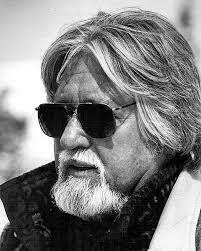Laszlo Kovacs 1933-2007
Internationally acclaimed cinematographer Laszlo Kovacs, who lensed the landmark cinematic achievement "Easy Rider" and compiled more than 70 credits .Kovacs, who died Sunday, was 74.
Mr. Kovacs was one of Hollywood's most influential and respected directors of photography, Kovacs lensed "Five Easy Pieces," "Shampoo," "Paper Moon," "New York, New York," "What's Up, Doc?" "Ghost Busters," "My Best Friend's Wedding" and "Miss Congeniality."
"Kovacs was one of the great cinematographers in the 1970s who basically changed the way movies had looked up until that time," said Richard Crudo, past president of the American Society of Cinematographers. "His roots were in the low-budget independent world, and he took a lot of that ethic to another level. Years later, he became a master of the high-gloss studio look. But no matter what he did, there was always a tremendous amount of heart in his work."
The Hungary-born cinematographer never won an Oscar but carried during his career a remarkable story of courage that occurred 50 years ago during his country's revolution.Kovacs was born to Imre and Julianna Kovacs and raised on a farm in Hungary when that country was isolated from the Western world, first by the Nazi occupation and later during the Cold War. Kovacs was in his final year of school in Budapest when a revolt against the communist regime started on the city streets.He and his lifelong friend Vilmos Zsigmond -- who also went on to become one of Hollywood's leading directors of photography -- made the daring decision to document the event for its historic significance. To do this, they borrowed film and a camera from their school, hid the camera in a paper bag with a hole for the lens and recorded the conflict.The pair then embarked on a dangerous journey during which they carried 30,000 feet of documentary film across the border into Austria. They entered the U.S. as political refugees in 1957."As a man I loved him," said Zsigmond, reached in North Carolina where he is shooting the film "Bolden! "We always had a great time together." Their historic film was featured in a CBS documentary narrated by Walter Cronkite.After working on several smaller films during the 1960s, Kovacs was approached by Dennis Hopper in 1969 to film Easy Rider. Kovacs turned it down, but Hopper was persistent and met with him to act out all the scenes."At the end of that meeting, I asked when we could start shooting," Kovacs recalled in a 1998 interview with the International Cinematographers Guild. "That's how I happened to shoot Easy Rider. We knew it was something special, but none of us realized that it would win awards and become so influential."The counterculture classic, also starring Peter Fonda and Jack Nicholson, was shot during a 12-week journey from Los Angeles to New Orleans, entirely on location."That was the style of Poetic Reality, basically making movies that look real," Zsigmond said. "The lighting is real, and the people in the theater think they are seeing the real thing.*
Personally I liked the way Kovacs lite a scene. He would always try and justify the light whether it was coming from a window or a light fixture. Realistically is the way Kovacs shot movies, and the above statement by Vilmos Zsigmond rings very true. It's a sad day when you learn of such a talent has passed, but at least he left a lifetime of images to amaze and entertain us for some time. Thanks Laszlo.
*Excerpts taken from Pat Saperstein & Todd McCarthy's obit in Variety.com




Comments